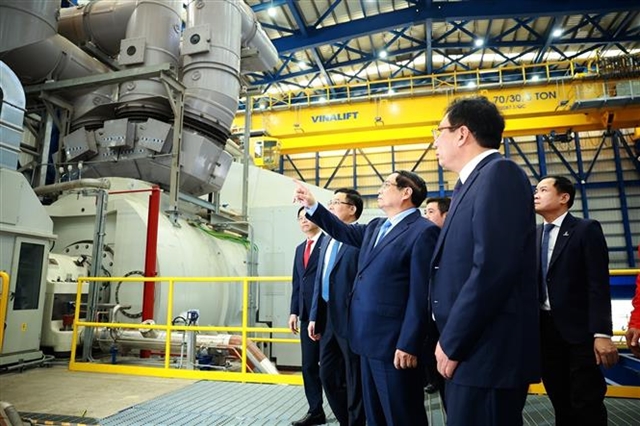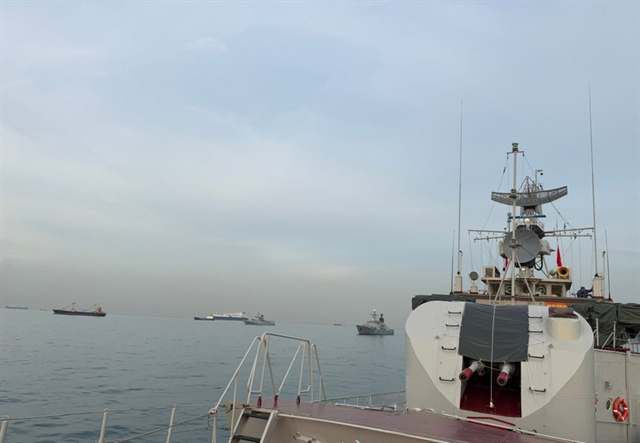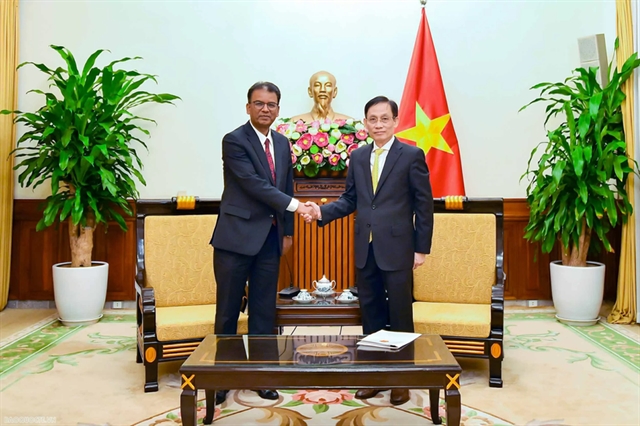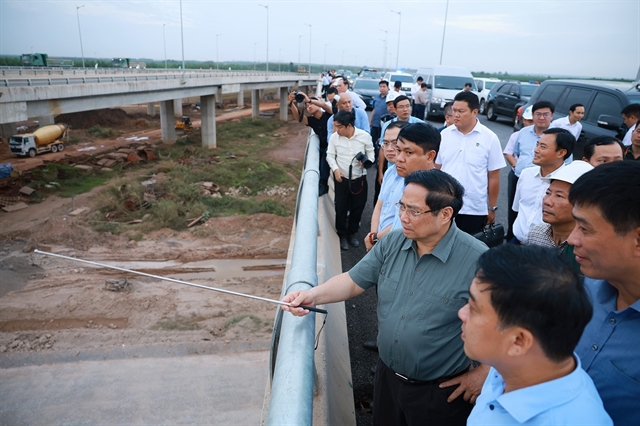 Politics & Law
Politics & Law

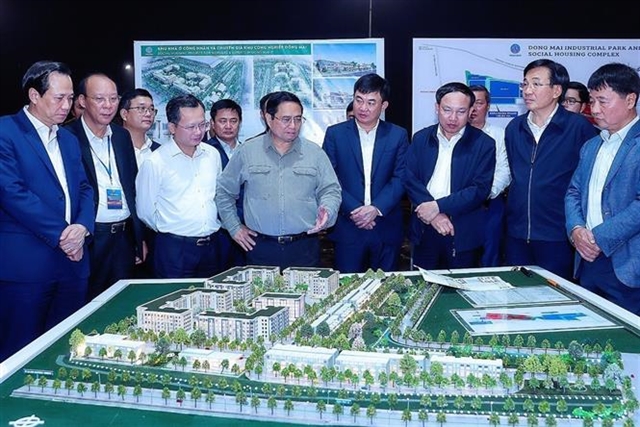 |
| Prime Minister Phạm Minh Chính visits the housing project for workers to be constructed at Đông Mai Industrial Park, Quảng Ninh Province. — VNA/VNS Photo |
QUẢNG NINH — From a locality with a slow growth pace, over the last 60 years, the coastal province of Quảng Ninh has now become one of the most dynamic industrial and service provinces, leading the country in various sectors and becoming the innovation centre of the northern delta region.
On October 30, 1963, the National Assembly of the Democratic Republic of Việt Nam approved the merger of Hải Ninh Province and Hồng Quảng area into a new administrative unit, named Quảng Ninh Province.
Late President Hồ Chí Minh suggested calling it Quảng Ninh, from combining the word Quảng (from Hồng Quảng) and the word Ninh (from Hải Ninh). He said "Quảng Ninh means a large peaceful land."
On January 1, 1964, Quảng Ninh Province was born, forming an integrated political, economic and military entity.
In 1964, Quảng Ninh exceeded the target of one million tonnes of coal exploitation, making the it the leading province in Việt Nam’s coal mining industry.
On February 2, 1965, Quảng Ninh was honoured to welcome late President Hồ Chí Minh - the first and only time Quảng Ninh has welcomed President Hồ Chí Minh since its new name.
He held intimate talks with local people at Hòn Gai high school yard. He also stopped at Phạm Hồng Thái Primary School and Yên Lập pine hill to chat with people and foreign experts working here.
During the wars, people and local authorities not only fought against foreign invaders, but also focused on production, maintaining political security and socio-cultural activities.
The province’s industrial production value in 1975 reached nearly VNĐ2.2 trillion, an increase of VNĐ594 billion compared to 1965.
The total agricultural output in 1975 was 1.21 times higher than that in 1965.
After 1975, the province established an ocean-going fleet to trade with foreign countries and export goods to earn foreign currency.
Big strides following renewal period
During the Đổi mới (renewal) period following the guidelines of the 6th Party Congress in December 1986, Quảng Ninh Province focused on developing coal mining, food production, consumer goods and export industries.
The implementation of renewal policies gave the province a new look and rapid development.
During 1986-95 period, the province’s average GDP was 9.6 per cent per year.
This increased to 12.65 per cent during the 1996 – 2005 period.
The average export turnover during this period also increased 18 to 20 per cent annually.
From a province receiving 70 – 80 per cent of State budget assistance, by 1995, Quảng Ninh Province was able to balance the budget, contribute to the central Government, and address its own major difficulties in consumer goods and food.
The year 2005 marked a milestone when then Prime Minister Phan Văn Khải decided to establish the Vietnam National Coal and Mineral Industries Group (Vinacomin).
The Quảng Ninh’s coal mining output increased significantly.
In 1964, coal output only reached over one million tonnes. More than 30 years later, in 1995, this increased to 7.6 million tonnes.
In 2011, the group exploited 48.2 million tonnes, with revenue reaching over VNĐ93 trillion.
Maintaining stable development during 2010-16 period
During this period, the province built a new development model for the dynamic region and specific mechanisms and policies to create resources and premises for long-term development.
The total social investment capital, especially foreign investment, increased sharply.
The local authorities worked with strategic investors to implement many important projects, showing that the province's business investment environment improved and become more attractive.
Total investment capital for the transportation sector in the first half term reached VNĐ4.6 trillion, accounting for 29 per cent of total resources.
A new outlook in the 2016-23 period
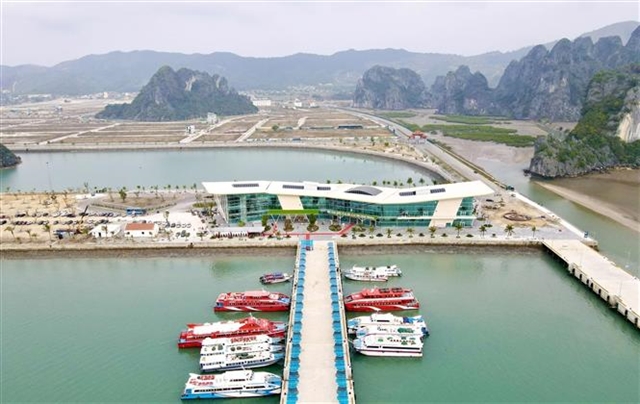 |
| A panoramic view of Ao Tiên high-class harbor in Vân Đồn District. The project with total investment capital of more than VNĐ610 billion has met the increasing travel demands of passengers traveling to Cô Tô District and island communes of Vân Đồn District. — VNA/VNS Photo |
From a humble province, mainly relying on the government’s support, Quảng Ninh has now become the comprehensive growth pillar of the north.
Its GRDP (Gross Regional Domestic Product) growth rate recorded over double digits for seven consecutive years from 2016 to 2022.
Sticking to the viewpoint that every citizen of Quảng Ninh Province should enjoy the fruits of growth, leaving no one behind, in the past five years, local authorities have issued 19 separate policies on social security and social welfare.
They also prioritise huge resources to disadvantaged areas, ethnic minority areas, policy beneficiaries and disadvantaged people.
Quảng Ninh Province has completed bringing electricity from the national grid to 100 per cent of villages, highlands, border areas and islands.
In three years 2020, 2021 and 2022, despite the unprecedented negative and serious impacts of the COVID-19 pandemic, Quảng Ninh Province still remained self-reliant thanks to bold, practical and efficient policies.
Its GRDP growth rates in 2020 reached 10.05 per cent while the numbers in 2021, 2022, were the same - 10.28 per cent.
State budget revenue reached 56.5 trillion in 2022, becoming a province with high domestic revenue collection. — VNS

